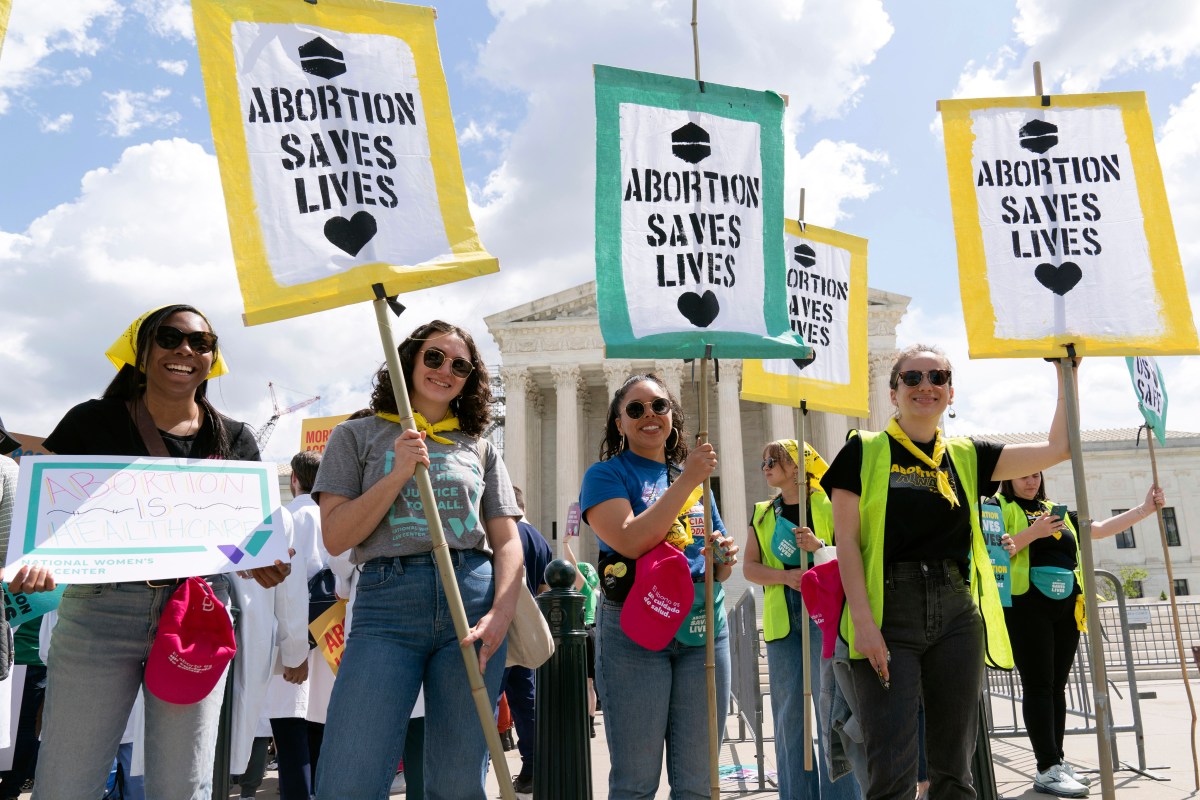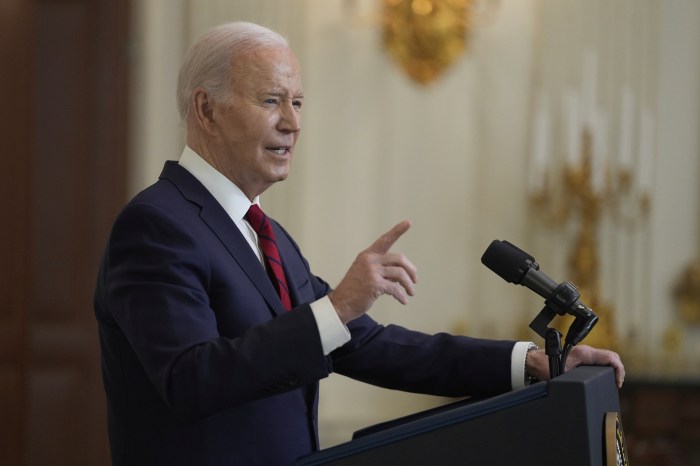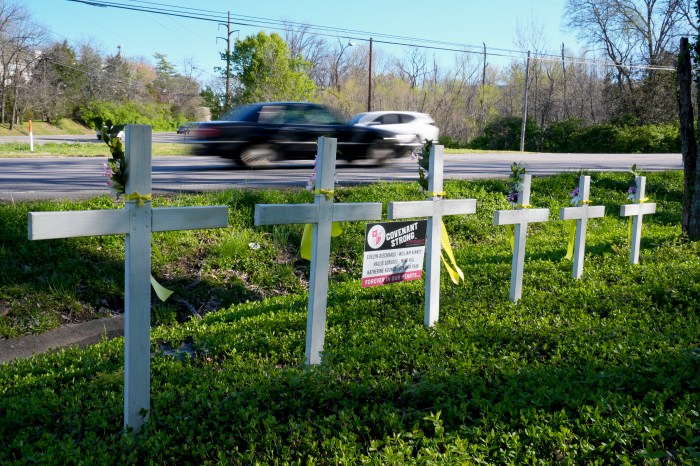WASHINGTON (AP) — The U.S. Supreme Court heard its first test on Wednesday of state abortion bans that have been enacted since the court upended the Roe v. Wade constitutional right to abortion. While the current case involves an Idaho abortion ban, the court’s ruling could have implications beyond that state.
Idaho lawmakers have banned abortion except when a mother’s life is at risk. The Biden administration says the state law conflicts with a federal law requiring emergency room doctors to stabilize patients, no matter what, even if that means an abortion.
How the court will rule is uncertain. The justices could make a major ruling — or they could rule narrowly on how Idaho’s state law interacts with the federal law, the the Emergency Medical Treatment and Active Labor Act ( EMTALA ).
A look at the key points in Wednesday’s arguments.
Attorneys for both sides warned that the justices’ ruling could affect women and doctors far beyond Idaho, changing how emergency rooms treat patients in many other states.
“There are 22 states with abortion laws on the books,” said Attorney Joshua N. Turner, who represented Idaho. “This isn’t going to end with Idaho. … This question is going to come up in state after state.”
Solicitor General Elizabeth Prelogar, arguing for the Biden administration, cautioned that other states could pass laws limiting how emergency rooms offer other services, which could mean trouble for more patients when they go to a hospital.
“This effectively allows states to take any particular treatment they don’t want their hospitals to provide and dump those patients out of state,” she warned. “And you can imagine what would happen if every state started to take this approach.”
Medical “what-ifs” peppered the arguments, sometimes turning personal: What if a woman’s water breaks early in her pregnancy, exposing her to serious infection risk at a point when the fetus can’t survive outside the womb? What if continuing the pregnancy would subject a pregnant person to organ failure, or cause permanent infertility?
Idaho’s Turner told the court that those would be “very case by case” situations – a response that left Justice Amy Coney Barrett “shocked.”
Barrett, one of the conservatives who voted to overturn Roe v. Wade, pressed Turner on when a prosecutor might bring charges against a doctor for providing an abortion. Experts whom Turner had cited, Barrett said, had told the court that doctors who performed abortions in those cases would be protected.
Turner agreed and said that doctors in Idaho could use their “good faith,” medical judgment but Barrett pressed him further.
“What if the prosecutor thought differently?” Barrett asked. “What if the prosecutor thought, well, I don’t think any good faith doctor could draw that conclusion.”
Justice Sonia Sotomayor, part of the court’s liberal minority, asked Turner to consider how the federal law requires hospitals to treat patients for more common medical emergencies, like the diabetes that she has had since childhood.
What if, she said, the state banned treating diabetes with insulin?
“Federal law would say you can’t do that,’” said Sotomayor. “Objective medically accepted standards of care require the treatment of diabetics with insulin. Idaho is saying unless the doctor can say that this person’s death is likely, as opposed to serious illness, they can’t perform abortion.”
Conservative Justice Samuel Alito was particularly alarmed by Idaho’s argument that emergency rooms could be forced to provide abortions if a pregnant patient in mental distress demanded one. The state has only raised this as a hypothetical, and not provided an actual example of a doctor being in this position.
“Does health mean only physical health or does it also mean mental health?” Alito asked Prelogar, noting that he was trying to get her on the record about it if future incidents arise.
Prelogar said it’s not the administration’s view that an abortion would be provided as emergency medical care if a woman was suicidal or depressed. She said that the hospital would be required to treat such patients in other ways, dealing with their mental health episode.
“That could never lead to pregnancy termination because that is not the accepted standard of practice to treat any mental health emergency,” Prelogar said.
Congress passed its federal law mandating that emergency rooms stabilize or treat patients in 1986, after reports that private hospitals were offloading patients – many of them without health insurance and in bad condition – on public hospitals.
Nearly 40 years later, the attorneys and justices spent some of Wednesday diving into why Congress crafted the law.
Justice Brett Kavanaugh pressed Prelogar on why the law was initially created. Idaho’s officials have argued that the law was supposed to ensure patients without health insurance were treated, and should not be used as a way for the federal government to police whether doctors perform abortions in an emergency.
“The text of the statute which says in no uncertain terms, here is the fundamental guarantee: If you have an emergency medical condition and you go to an ER in this country, they have to stabilize you,” Prelogar said.
But Turner raised another conundrum for the court about Congress’ intent: Why would doctors be required to perform abortions when the text of the law calls on them to treat “unborn children.”
“It would be a strange thing for Congress to have regard for the unborn child and yet also be mandating termination of unborn children,” he told the court.
It’s unclear exactly where the Supreme Court will land, but the court had earlier allowed Idaho’s abortion ban to be fully enforced while litigation continues.
That means at least five members of the court voted to put on hold a lower court’s ruling that the federal law overrides Idaho’s abortion ban in medical emergencies. So the Biden administration was facing a tough road in persuading the court to uphold that ruling.
Six conservative justices all have cast votes to limit abortion access, including five who voted less than two years ago to overturn Roe v. Wade.
Justices Neil Gorsuch, Clarence Thomas and Alito seemed most likely to side with Idaho on Wednesday. The liberal justices, Ketanji Brown Jackson, Kagan and Sotomayor were most favorable to the administration.
The outcome likely turns on the votes of the other three members of the court — Chief Justice John Roberts and Barrett and Kavanaugh.
Barrett and Kavanaugh voted to overturn Roe.
——
Boone reported from Boise, Idaho.



















